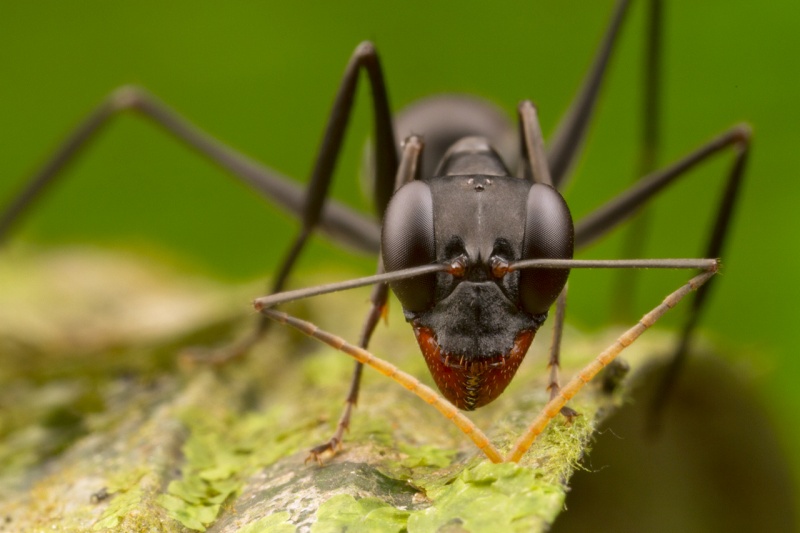Gigantiops Destructor Facts
- Firstly, the uniquely named Gigantiops Destructor represents the sole member of its genus. With a name like that, you would think one is enough.
- The common name forms a somewhat deceptive sobriquet, however. Although its behavior is most unusual for a eusocial species, this insect remains of overall average size.
- However, only the eyes of the Gigantiops Destructor grow unusually large. Most notably, it possesses the largest eyes, relative to body size, of any known species of ant.
Related Articles
Gigantiops Destructor Physical Description
Due to the somewhat outrageous name, many expect the Gigantiops Destructor to tower over related species in terms of sheer physical size.
However, despite the name researchers gave it, this invertebrate appears similar to other ant species of its type in overall size, except for its eyes.
The exceptionally large eyes, however, set this particular species apart, and provide it with excellent vision of approaching predators.
Additionally, the legs of this remarkable insect evolved as incredibly powerful, even in relation to other jumping ants.
- Kingdom: Animalia
- Phylum: Arthropoda
- Class: Insecta
- Order: Hymenoptera
- Family: Formicidae
- Genus: Gigantiops
- Species: G. destructor
Gigantiops Destructor Distribution, Habitat, and Ecology
Most notably, to date, the only known habitat of the Gigantiops Destructor consists of the Amazon region of South America.
In that region, the rather powerful insect makes its nests in various locations, including soil, rotted wood, or even abandoned animal dens.
This insect has also evolved a resourceful and innovative defensive strategy of building its nests in close proximity to the dreaded Bullet Ant.
In addition, this species preys primarily on a variety of small arthropods. Rather surprisingly, in a pattern that appears unique among eusocial insects, individual members do not cooperate in hunting or feeding habits.
Despite its rather fearsome name, the Gigantiops Destructor generally uses its incredible leaping ability to flee at the sight of humans or potential threats.
Finally, in fact, numerous individuals may occasionally be seen jumping between tree branches. to do exactly that.
Species Sharing Its Range
Check out our other articles on Striped Possum, Driver Ant, Bluebottle Ant, Great Dismal Swamp, Velvet Ant, 6 Extremely Localized Invertebrates, Oceanic whitetip shark, Texas Alligator Lizard

